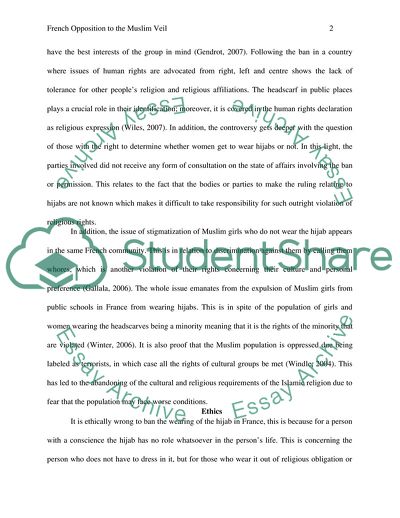Cite this document
(French Opposition to the Muslim Veil (Headscarf) Essay - 1, n.d.)
French Opposition to the Muslim Veil (Headscarf) Essay - 1. Retrieved from https://studentshare.org/history/1783841-french-opposition-to-the-muslim-veil-headscarf
French Opposition to the Muslim Veil (Headscarf) Essay - 1. Retrieved from https://studentshare.org/history/1783841-french-opposition-to-the-muslim-veil-headscarf
(French Opposition to the Muslim Veil (Headscarf) Essay - 1)
French Opposition to the Muslim Veil (Headscarf) Essay - 1. https://studentshare.org/history/1783841-french-opposition-to-the-muslim-veil-headscarf.
French Opposition to the Muslim Veil (Headscarf) Essay - 1. https://studentshare.org/history/1783841-french-opposition-to-the-muslim-veil-headscarf.
“French Opposition to the Muslim Veil (Headscarf) Essay - 1”. https://studentshare.org/history/1783841-french-opposition-to-the-muslim-veil-headscarf.


